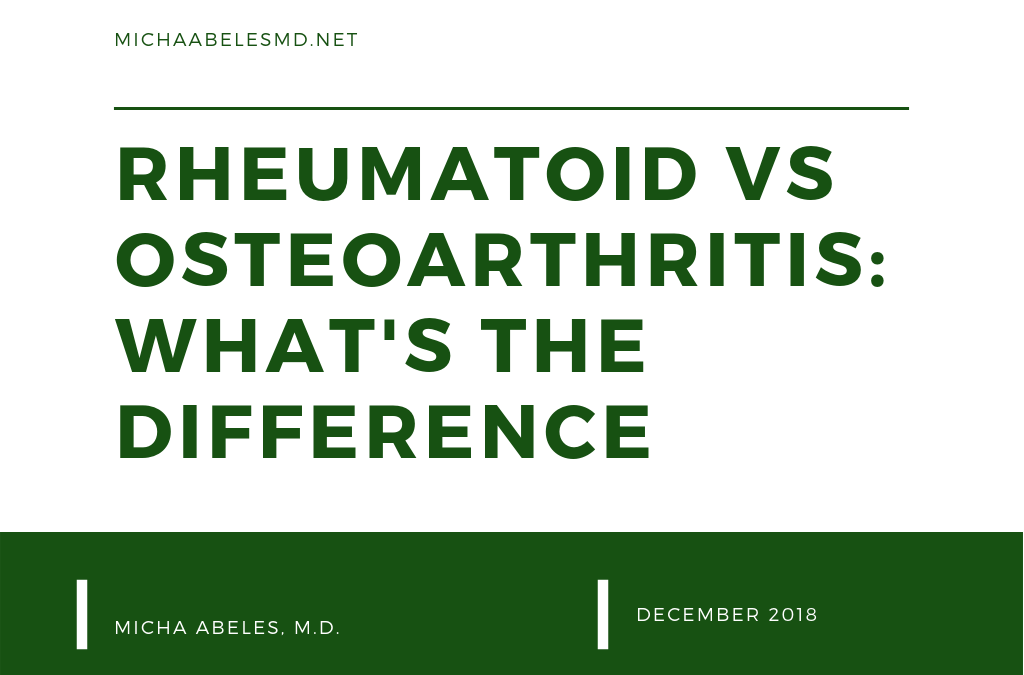Osteoarthritis (OA) and rheumatoid arthritis (RA) are both forms of inflammation of the joints but they are actually very different types of a broader condition called arthritis. There are many forms of arthritis, including gout, but RA and OA are two of the most common, affecting a combined 32 million people in the United States alone. Despite their similarities, the diseases have different causes and symptoms that can vary quite a bit in spite of some overlap.
What Is Osteoarthritis?
OA is a degenerative joint disease affecting the cartilage. Also known as wear-and-tear arthritis, it’s caused by a breakdown in cartilage of the joints that leads to pain and inflammation as bone rubs against bone without the protective cushion of the cartilage. OA may begin in a single joint and get progressively worse. This disease is most common among older adults with 70% of people over 70 showing some evidence of OA. It’s the most common form of arthritis.
What Is Rheumatoid Arthritis?
Rheumatoid arthritis also affects the joints but it’s considered an autoimmune disease that causes chronic inflammation of the lining of the joint and sometimes organs as well. As an autoimmune disorder, RA happens when the body believes the soft lining of the joints is a threat and attacks it much like it would a virus. RA usually affects multiple joints in the body and an estimated 75% of people with RA are women. Unlike OA, which usually occurs in older people over 65, rheumatoid arthritis is usually diagnosed between 30 and 60. There is no known cause of RA.
Symptoms of RA vs OA
Both RA and OA cause joint pain although the type, duration, and even location of the pain can vary. As a general rule, osteoarthritis causes pain in an affected joint after repeated activity or use. It usually causes stiffness in the joints in the morning for 30 minutes or less with pain that worsens later in the day. After inactivity, the joints may become stiff or swollen. A hallmark of OA is the development of bone spurs, enlargements called Heberden’s or Bouchard’s nodes, and reduced range of motion.
Rheumatoid arthritis also causes joint swelling, pain, and stiffness. There may be warmth and redness around the joint as well as reduced range of motion. RA also causes morning joint stiffness but it usually lasts for more than 60 minutes. A hallmark of RA is symmetrical joint involvement. While OA may affect one knee, for example, RA would affect both.
Osteoarthritis usually affects weight-bearing joints like the knees, hip, and back along with smaller joints in the fingers. Rheumatoid arthritis typically affects joint pairs, usually smaller joints like the ankles or small joints in the hands and feet.
